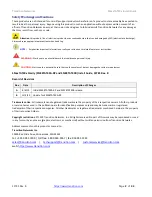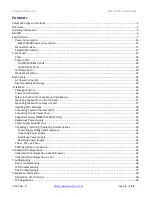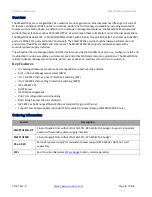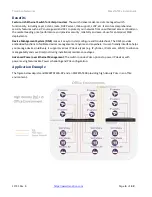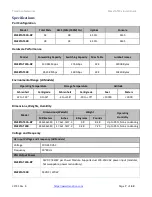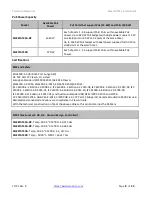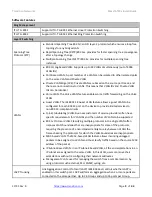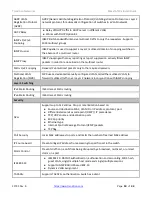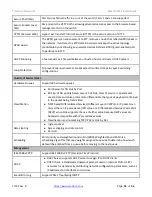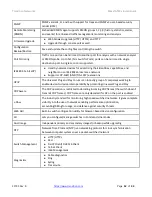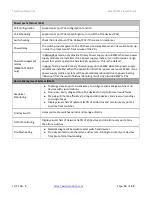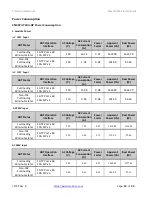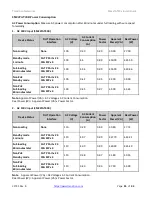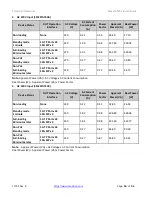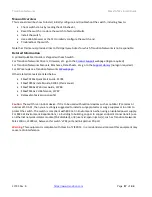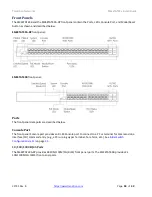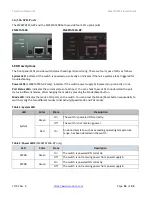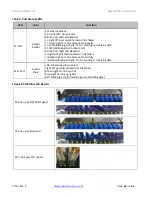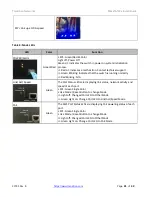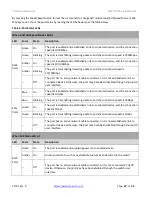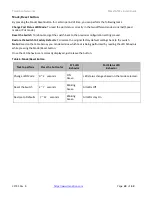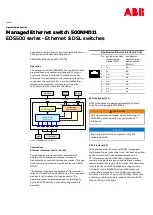
Transition Networks
SMxxTAT4Xx Install Guide
33785 Rev. B
Page
9
of
43
Software Features
Ring Management
ITU-T G.8031
Supports ITU-T G.8031 Ethernet Linear Protection Switching
ITU-T G.8032
Supports ITU-T G.8032 Ethernet Ring Protection Switching
Layer 2 Switching
Spanning Tree
Protocol (STP)
⚫
Standard Spanning Tree 802.1d: an OSI layer-2 protocol which ensures a loop free
topology for any bridged LAN
⚫
Rapid Spanning Tree (RSTP) 802.1w: provides for faster spanning tree convergence
after a topology change
⚫
Multiple Spanning Tree (MSTP) 802.1s: provides for multiple spanning tree
instances
VLANs
⚫
802.1Q tag-based VLAN: Supports up to 4K VLANs simultaneously (out of 4096
VLAN IDs)
⚫
Port-based VLAN: A port member of a VLAN can be isolated to other isolated ports
on the same VLAN and Private VLAN
⚫
Private VLAN Edge (PVE): Private VLANs are based on the source port mask, and
there are no connections to VLANs. This means that VLAN IDs and Private VLAN
IDs can be identical
⚫
Voice VLAN: The Voice VLAN feature enables voice traffic forwarding on the Voice
VLAN
⚫
Guest VLAN: The IEEE 802.1X Guest VLAN feature allows a guest VLAN to be
configured for each 802.1X port on the device to provide limited services to
non-802.1X-compliant clients
⚫
Q-in-Q (double tag) VLAN: Business customers of service providers often have
specific requirements for VLAN IDs and the number of VLANs to be supported
⚫
802.1v Protocol VLAN: Classifying multiple protocols into a single VLAN often
imposes VLAN boundaries that are inappropriate for some of the protocols,
requiring the presence of a non-standard entity to relay between VLANs the
frames bearing the protocols for which the VLAN boundaries are inappropriate
⚫
MAC-based VLAN: The MAC-based VLAN feature allows incoming untagged
packets to be assigned to a VLAN and thus classify traffic based on the source MAC
address of the packet
⚫
IP Subnet-Based VLAN: In an IP subnet
–
based VLAN, all the end workstations in an
IP subnet are assigned to the same VLAN. In this VLAN, users can move their
workstations without reconfiguring their network addresses
⚫
Management VLAN: used for managing the switch from a remote location by
using protocols such as telnet, SSH, SNMP, syslog, etc.
LACP Trunking
Link Aggregation Control Protocol (LACP) IEEE 802.3ad: controls whether LACP is
enabled on this switch port. LACP will form an aggregation when 2 or more ports are
connected to the same partner. Up to 26 Groups and up to 16 ports per Group.


